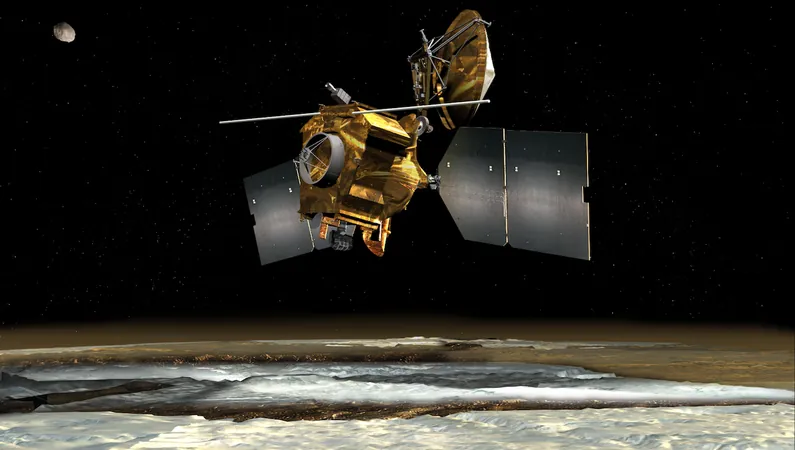
Mars Reconnaissance Orbiter Shows Off New Moves in Search for Water!
2025-06-28
Author: Rajesh
NASA's Mars Reconnaissance Orbiter (MRO) is enhancing its capabilities after nearly two decades in space, unveiling impressive new maneuvers that could revolutionize our understanding of the Red Planet's secrets.
Recently, the MRO has begun executing dramatic rolls—turning nearly upside down—to delve deeper into the Martian surface and discover potential sources of liquid and frozen water.
This groundbreaking technique, detailed in a recent study from the Planetary Science Journal, included three significant ‘very large rolls’ performed between 2023 and 2024. Gareth Morgan from the Planetary Science Institute stated, "Teaching an old spacecraft new tricks opens up entirely new regions to explore beneath the surface."
Revolutionizing Peering Below Mars' Surface
Initially designed to roll 30 degrees in any direction for surface observations, the MRO’s new rolling strategy allows for even deeper investigation. Reid Thomas, MRO's project manager at NASA's Jet Propulsion Laboratory, emphasized, "Our spacecraft is uniquely equipped to roll continuously."
Each roll requires intricate planning as the orbiter manages five science instruments with varying targeting needs. The timely coordination is key to ensure that each instrument gets its ideal view of Mars during observations.
Unlocking the Secrets of Martian Ice
The Shallow Radar (SHARAD), one of the instruments affected by the new maneuver, can now peer from about half a mile to over a mile underground. This technology is essential for identifying ice deposits, which could one day support human exploration by providing accessible water for astronauts and fueling for return journeys.
In 2023, engineers adapted the MRO to conduct 120-degree rolls, allowing unobstructed radar signals to penetrate the Martian subsurface, offering a tenfold increase in accuracy.
Challenges and Innovations Ahead
However, these extreme rolls pose challenges: while the orbiter maximizes its scientific potential, it also temporarily loses communication alignment with Earth and the sun. Thomas noted, "We must thoroughly analyze power consumption for these rolls to ensure the spacecraft remains operational."
A Bright Future for Mars Research
With only one or two of these ambitious maneuvers planned each year, there's a substantial emphasis on streamlining procedures for future frequency. Meanwhile, another MRO instrument, the Mars Climate Sounder, is adjusting to incorporate standard roll capabilities to gather vital atmospheric data.
Together, these innovations not only elevate our understanding of Martian geography but also pave the way for the future of human exploration on the planet.
As NASA and collaborators embrace this new rolling capability, the excitement builds: What new discoveries lie hidden beneath the Martian surface?


 Brasil (PT)
Brasil (PT)
 Canada (EN)
Canada (EN)
 Chile (ES)
Chile (ES)
 Česko (CS)
Česko (CS)
 대한민국 (KO)
대한민국 (KO)
 España (ES)
España (ES)
 France (FR)
France (FR)
 Hong Kong (EN)
Hong Kong (EN)
 Italia (IT)
Italia (IT)
 日本 (JA)
日本 (JA)
 Magyarország (HU)
Magyarország (HU)
 Norge (NO)
Norge (NO)
 Polska (PL)
Polska (PL)
 Schweiz (DE)
Schweiz (DE)
 Singapore (EN)
Singapore (EN)
 Sverige (SV)
Sverige (SV)
 Suomi (FI)
Suomi (FI)
 Türkiye (TR)
Türkiye (TR)
 الإمارات العربية المتحدة (AR)
الإمارات العربية المتحدة (AR)